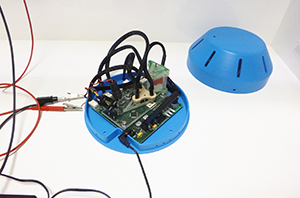Intasense
INTEGRATED AIR QUALITY SENSOR FOR ENERGY EFFICIENT ENVIRONMENT CONTROL
Continued exposure to environments with poor air quality is a major public health concern in developed and developing countries. The chronic illnesses associated with exposure to poor air quality represent a major drain on international economies. In addition to the public healthcare costs, it is estimated that the total recorded sick leave in the EU that can be linked to poor air quality represents a productivity loss equivalent to more than €80 billion annually.
Space heating typically accounts for more than 50% of the energy consumption of public and residential buildings, and reduction of this energy demand is a key strategy in the move to low energy/low carbon buildings.
The careful management of air flow within a building forms part of this energy reduction strategy through the control of inlet fresh air and exhaust air, maximising air re-circulation, and minimising the amount of fresh, cold air which is often drawn in through a heat exchanger. However, in doing this, there is a high risk that the air quality is reduced.
The INTASENSE concept is to integrate a number of micro- and nano-sensing technologies onto a common detection platform to produce a low-cost miniaturised system that can comprehensively measure air quality, and identify the nature and form of pollutants. The INTASENSE air quality monitor will be wirelessly linked to air-handling and pre-conditioning infrastructure allowing air circulation to be managed in an energy efficient way while maintaining a healthy environment.

